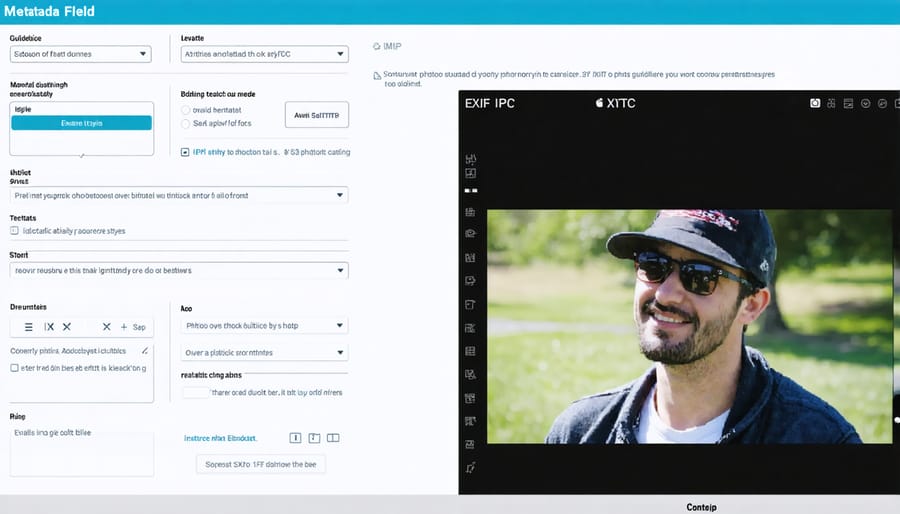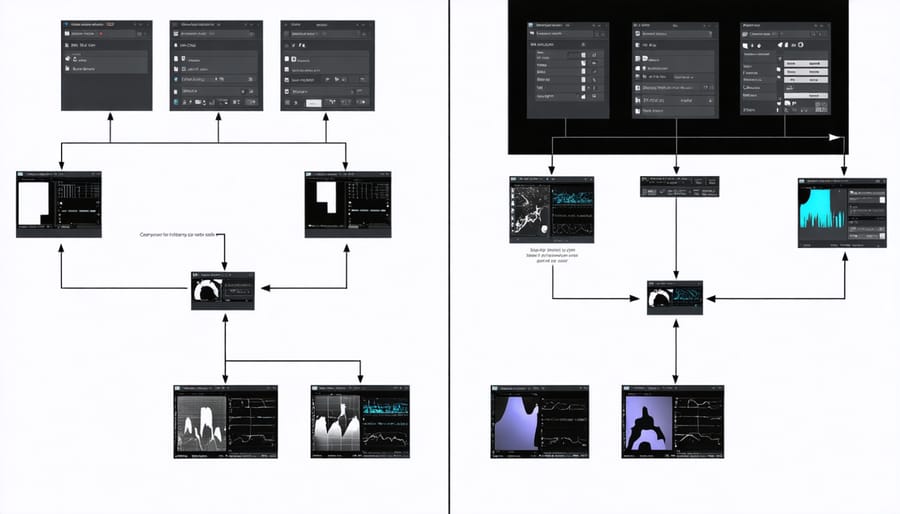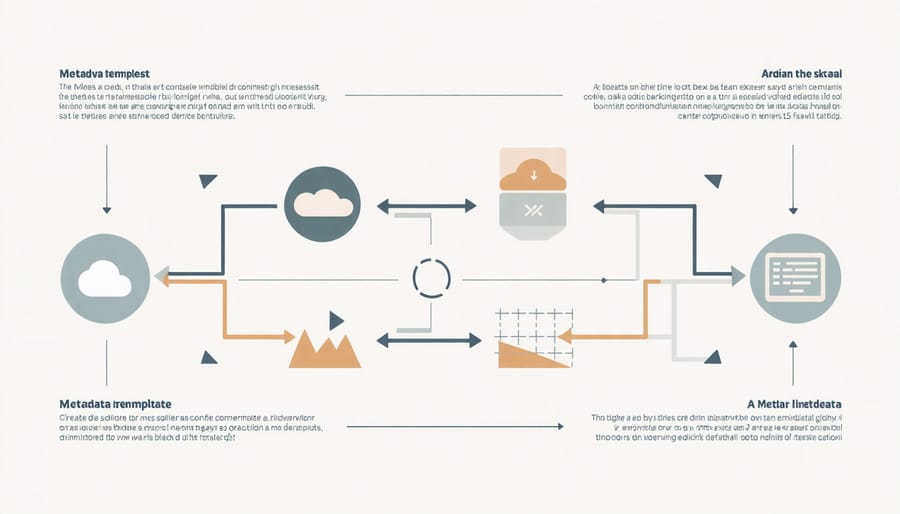
Transform your photography workflow by mastering JPEG metadata editing – the powerful yet often overlooked tool that helps optimize your photography portfolio through smart file management. Professional photographers leverage metadata to embed critical information directly into their images, from copyright details and camera settings to location data and descriptive keywords. This invisible layer of information not only protects your creative work but also streamlines image organization, enhances searchability, and maintains the professional integrity of your digital assets.
Whether you’re managing thousands of client photos or organizing your personal collection, proper metadata management serves as the backbone of an efficient digital photography workflow. Modern metadata editors offer sophisticated tools for batch processing, custom templates, and automated tagging – transforming hours of manual organization into minutes of automated precision. Let’s explore how to harness these powerful features to protect, organize, and maximize the value of your photographic work.
Understanding JPEG Metadata: The Basics
EXIF, IPTC, and XMP: What’s the Difference?
When working with image metadata, you’ll encounter three main formats: EXIF, IPTC, and XMP. Each serves a distinct purpose in storing information about your photos. EXIF (Exchangeable Image File Format) primarily handles technical camera data, such as aperture, shutter speed, and GPS coordinates. It’s automatically embedded by your camera when you take a photo.
IPTC (International Press Telecommunications Council) metadata focuses on descriptive information like captions, copyright details, and contact information. This format has been the industry standard for photojournalists and stock photographers since the 1970s. It’s particularly useful for managing image rights and attribution.
XMP (Extensible Metadata Platform), developed by Adobe, is the most flexible and modern of the three. It can store both EXIF and IPTC data, plus additional custom information. Think of XMP as a universal container that can handle virtually any type of metadata you need to embed in your images.
Understanding these formats helps you choose the right metadata fields for your specific needs, whether you’re organizing your photo library, protecting your copyright, or sharing images professionally.

Essential Metadata Fields for Photographers
When managing your image metadata, certain fields deserve special attention from photographers. The copyright information is crucial, allowing you to assert ownership of your work by including your name, contact details, and usage rights. The creation date and time help maintain chronological accuracy, especially when organizing extensive photo collections.
Technical metadata fields like camera make, model, and exposure settings provide valuable insights into your shooting conditions and help refine your photography techniques. GPS coordinates, if available, can be invaluable for location scouting or remembering exact shooting spots for landscape photography.
Keywords and descriptions are essential for searchability, helping you quickly locate specific images in your collection. Consider including relevant details like event names, subject matter, or shooting conditions. Caption fields can contain detailed information about the photo’s context, making them particularly useful for documentary or editorial work.
Rating and color label fields, while not strictly metadata, work alongside these details to create a comprehensive organization system. Remember to include any licensing information if you’re sharing images commercially or through stock photography platforms.
Popular JPEG Metadata Editors Compared

Desktop Solutions
When it comes to managing JPG metadata on your desktop, several powerful solutions can help you streamline your photo editing workflow. Adobe Bridge stands out as a professional-grade option, offering comprehensive metadata editing capabilities alongside robust file management features. It’s particularly valuable for photographers already invested in the Adobe ecosystem.
ExifTool, while sporting a less flashy interface, is a photographer’s Swiss Army knife for metadata manipulation. This free, open-source tool provides unmatched control over image metadata, though its command-line interface might initially intimidate newcomers. Don’t let that deter you – various graphical interfaces are available to make ExifTool more accessible.
For those seeking a more user-friendly approach, XnView MP offers a balanced combination of simplicity and functionality. Its intuitive interface makes metadata editing straightforward, while still providing advanced features when needed. The ability to batch process images makes it particularly efficient for managing large photo collections.
ACDSee Photo Studio presents another excellent option, featuring a modern interface with powerful metadata tools. Its standout feature is the ability to customize metadata templates, perfect for photographers who frequently work with similar types of shots.
These desktop solutions often provide more robust features than their online counterparts, making them ideal for serious photographers who need precise control over their image information.
Online and Mobile Options
For photographers who prefer working in the cloud or on their mobile devices, several excellent online and mobile metadata editing options are available. These tools offer convenience and accessibility when you’re away from your desktop computer.
Popular web-based editors like Pixlr and Photopea provide straightforward metadata editing capabilities directly in your browser. These platforms are particularly useful for quick edits when you need to modify image information on the go. Many of these online tools offer free basic features, with premium options available for more advanced functionality.
On the mobile front, both iOS and Android users have access to robust metadata editing apps. For iOS, apps like PhotoMetaData and Exif Viewer provide comprehensive metadata management capabilities. Android users can turn to apps like Photo Exif Editor or Metadata Remover, which offer similar functionality with intuitive interfaces.
Cloud storage services like Google Photos and Dropbox also include basic metadata viewing and editing features. While not as comprehensive as dedicated tools, they can be convenient for simple metadata adjustments when accessing your photo library through these platforms.
Remember that when using online tools, you should always be mindful of privacy concerns, especially when uploading sensitive images. Many web-based editors offer secure connections and privacy guarantees, but it’s wise to read their terms of service before uploading valuable photographs.
Best Practices for Metadata Editing
Batch Processing Techniques
When managing a large photo library, editing metadata one image at a time simply isn’t practical. Batch processing allows you to modify metadata across multiple images simultaneously, saving countless hours and helping to future-proof your photo collection.
Most metadata editors offer several approaches to batch processing. The simplest method is selecting multiple images and applying identical changes to all of them—perfect for adding copyright information or location data to photos from the same shoot. For more nuanced control, template-based editing lets you create preset metadata combinations that you can quickly apply to different image sets.
Advanced users can leverage pattern-matching and variables for intelligent batch processing. For example, you can automatically increment sequence numbers in titles or extract date information from filenames to populate metadata fields. Some editors even support scripting capabilities, allowing you to create custom rules for complex metadata modifications.
Here’s a practical workflow tip: organize your images into logical groups before batch processing. This might mean sorting by shoot date, location, or subject matter. Then, create metadata templates for each category to ensure consistency across your library.
Remember to always preview your changes before applying them to your entire selection. Most editors offer a sample preview feature that shows how your modifications will affect a few representative images. This extra step can prevent potentially time-consuming mistakes when working with large batches of photos.
Metadata Templates and Presets
Templates and presets are game-changers when it comes to efficiently managing your image metadata, especially when handling large batches of photos from the same shoot or event. Think of templates as your metadata recipe cards – create them once, and you can apply them consistently across multiple images with just a few clicks.
Start by identifying the metadata fields you commonly use. For wedding photographers, this might include copyright information, contact details, and standard wedding-related keywords. Nature photographers might want location data, species information, and seasonal tags. Create separate templates for different types of shoots or clients to streamline your workflow.
Most metadata editors allow you to save these templates in various formats. The XMP format is particularly versatile, as it’s widely supported and can be shared across different editing platforms. Consider creating hierarchical templates – a master template with your basic information (copyright, contact details) and sub-templates for specific shoot types or clients.
Here’s a practical approach to template creation:
– Basic Template: Copyright notice, contact information, and website
– Location Template: GPS coordinates, city, country, and location-specific keywords
– Event Template: Event name, date, client information, and usage rights
– Style Template: Color profile, processing information, and creative direction notes
Remember to regularly review and update your templates, especially when your contact information or copyright notices change. Some photographers create seasonal templates or year-specific ones to keep their metadata current and relevant.
Pro tip: Export your templates to a secure location and keep backups. This ensures you don’t lose your carefully crafted metadata structures during software updates or system changes.

Metadata Security and Privacy Considerations
Removing Sensitive Information
Images often contain sensitive information in their metadata, such as exact GPS coordinates, camera serial numbers, or personal details you might not want to share publicly. As you protect your image files, it’s crucial to review and remove any private data before sharing.
Start by examining your image’s metadata using your chosen editor. Look specifically for:
– GPS coordinates
– Device information
– Creation date and time
– Copyright information
– Personal tags or descriptions
– Software details
Most metadata editors offer a “Strip All” or “Remove Personal Information” option, which quickly removes sensitive data while preserving essential technical information. For more precise control, you can selectively delete specific fields:
1. Open your metadata editor
2. Select the image or batch of images
3. Navigate to the privacy or security section
4. Choose which metadata fields to remove
5. Save a new copy of the image to preserve the original
Remember to verify the removal by checking the edited file’s properties. For social media sharing, consider creating a preset that automatically strips sensitive data while retaining your copyright information and basic camera settings. This approach ensures consistent privacy protection across all your shared images while maintaining professional credibility.
Copyright Protection Through Metadata
Metadata serves as a powerful tool for protecting your photographic work in today’s digital landscape. By embedding copyright information directly into your JPG files, you create a permanent record of ownership that travels with your images wherever they go. Think of it as a digital watermark that’s less intrusive but equally effective.
To protect your images, start by adding your copyright notice, contact information, and usage rights to the metadata fields. Professional photographers often include their name, website, and specific licensing terms. For instance, you might write “© 2024 Jane Smith Photography. All rights reserved.” in the copyright field, along with your email address in the contact information section.
The beauty of metadata-based copyright protection lies in its persistence. Even if someone downloads and reshares your image, the ownership information remains intact unless deliberately stripped. This helps protect your rights and makes it easier for potential clients to find you when they want to license your work.
However, remember that metadata alone isn’t foolproof protection. It works best as part of a comprehensive strategy that might include visible watermarks, image registration, and proper licensing agreements. Regular audits of your online images using reverse image search tools can help you track where your photos appear and ensure your copyright information remains intact.
By consistently maintaining your metadata, you’re not just protecting your work – you’re also building a professional reputation and making it easier for legitimate users to respect your image rights.
Managing your JPG metadata effectively is more than just a technical exercise – it’s an essential part of modern digital photography workflow. Throughout this guide, we’ve explored how metadata editors can help you organize, protect, and enhance your image collection. From basic EXIF data management to advanced copyright protection, these tools offer photographers both creative and practical benefits.
Remember that successful metadata management starts with establishing a consistent workflow. Begin by choosing a metadata editor that matches your needs and comfort level, then develop a routine for adding essential information to your images. Whether you’re tagging photos for personal organization or preparing images for professional distribution, taking the time to properly manage your metadata will save you countless hours in the future.
To get started, consider implementing these key practices:
– Create metadata templates for frequently used information
– Regularly backup your image files with their metadata intact
– Document your workflow for consistency
– Review and update metadata periodically
As your photography journey continues, you’ll find that proper metadata management becomes second nature. The initial investment of time and effort will pay dividends in improved organization, enhanced searchability, and better protection of your creative work. Whether you’re a hobbyist or professional photographer, incorporating these metadata management practices into your workflow will help you maintain a more organized and professional image library.
Take the first step today by choosing your preferred metadata editor and establishing your workflow. Your future self will thank you for the organization and peace of mind that comes with proper metadata management.






















